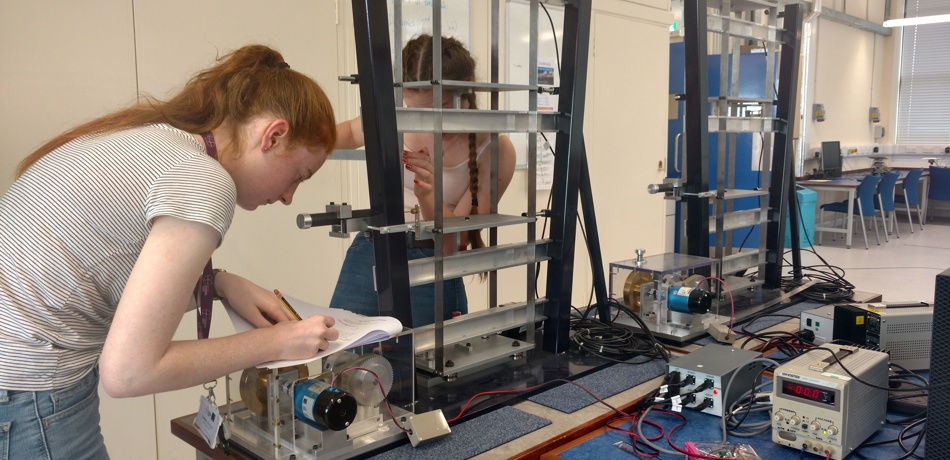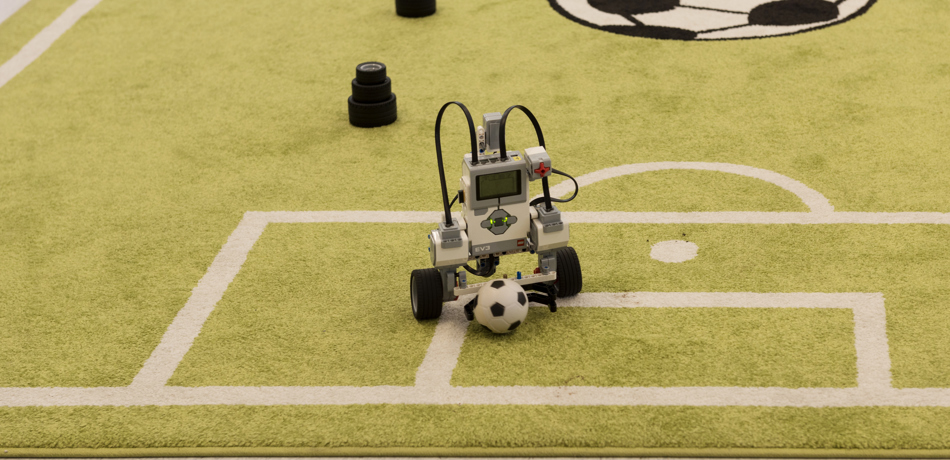Virtual tour of the Department of Engineering Science at the University of Oxford: Control lab

Control Lab
Control Lab
The Control Lab, which was fully refurbished in 2015, is mostly used for teaching, and some research. The unfixed tables allow the teaching space to be flexible and change design between terms.
The lab contains:
Helicopter Laboratory
A compulsory second year laboratory where students spend a day trying their hands at designing Proportional Integral Derivative (PID) controllers. The controller they design allows the helicopter to stay steady at a fixed pitch. We used to have helicopters that were designed in-house, but this specially designed educational hardware was bought in 2016. They can be used as a helicopter or half quadcopter.


Lego Coursework module
An optional week-long course for second years after their exams. They model a ‘segway’ robot, and then deploy PID controllers to keep it stable. The students play football in teams at the end of the week after creating their own mechanisms to kick the ball. This has run for three years and is very popular!
Water Tanks
One of our third year options. Students design a Linear Quadratic Regulator (LQR) controller to keep the height of the water tanks steady, even when there is a continuous flow of water in and out of the tank. These tanks were acquired in 2017 and are 1/3 of the size of our original hardware, so much easier to maintain! They also respond much faster than the old hardware and have an on-board processor, whereas we used to use a separate PC.


USB Inverted Pendulum
This inverted pendulum may be small, but it is usually people's favourite piece of hardware. When in action, the controller uses the information from the motor encoder to self-correct and keep the pendulum upright. It even has the ability to swing up from completely vertical. This equipment has been used by 4th year project students and Control researchers. A similar piece of equipment is the rotary inverted pendulum.
Shaky Building
Custom built hardware for Second year compulsory laboratory investigating resonance. The motor simulates ground excitation which can be altered by adjusting the voltage via a power supply. This causes the building to vibrate in different shapes or ‘modes’.
The principles of dynamic analysis have many applications and can be used to evaluate the response of a building to an earthquake event, for example.



